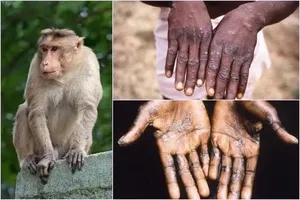 |
The Ministry of Health warns of Melioidosis after child death |
The Ministry of Health issued recommendations to the community on preventing Whitmore's disease, also known as ‘flesh-eating’ infection, after recording the death of a child from this dangerous disease.
According to the Ministry of Health, Whitmore disease was first discovered in 1925 in Vietnam, then appeared sporadically over the years in some localities. The most recent cases of Whitmore’s disease were recorded in the Central Highland Province of Dak Lak and the Central-Northern Province of Thanh Hoa. A 15-year-old child in Quang Xuong district of Thanh Hoa Province died of the fatal disease.
Accordingly, the Ministry of Health points out that Whitmore disease is an infection in humans and animals caused by Burkholderia Pseudomallei bacteria. B. pseudomallei bacteria exist naturally in soil, can pollute water sources and are transmitted mainly through the skin when there is an open wound in direct contact with contaminated soil, mud, or water. There is currently no evidence of transmission of the bacteria from person to person or from animals to humans.
Whitmore disease’s manifestations include pneumonia, septicemia, and localized infection in various organs. Diagnosis is by staining and culture. Treatment with antibiotics, such as ceftazidime, is prolonged. People with underlying diseases such as diabetes, liver, kidney, chronic lung disease, and immunodeficiency are at high risk of getting the disease.
There is presently no vaccine for Melioidosis. Prevention of infection in endemic-disease areas can be difficult since contact with contaminated soil is so common. Wearing boots during agricultural work can prevent infection through the feet and lower legs.
























